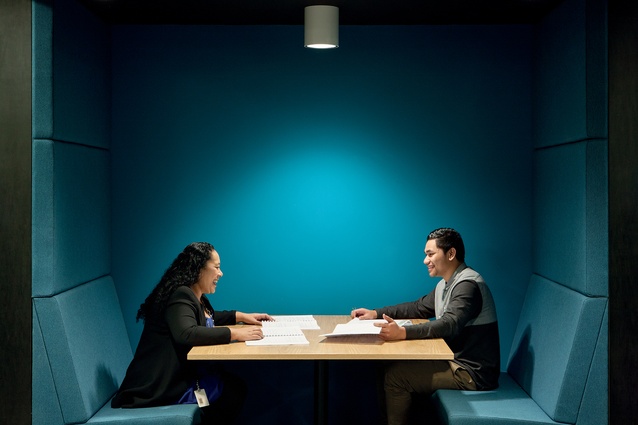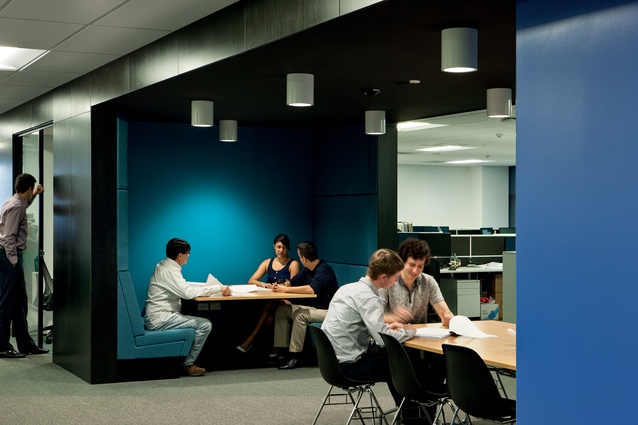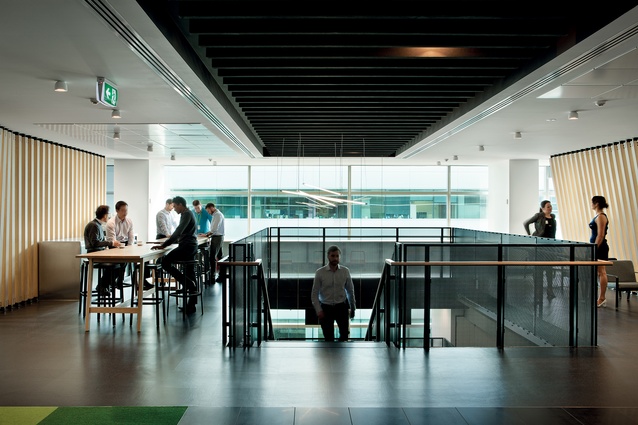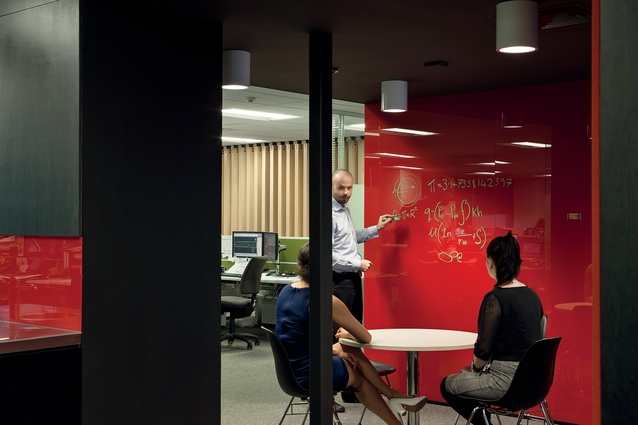Aurecon
Two years ago, engineering firm Aurecon was feeling a pull towards working in the Auckland CBD and had a desire to leave its tired and dysfunctional Newmarket offices behind.
In an attempt to avoid the costly move, a meeting with Jasmax designers was arranged and Aurecon was asked a question that fuelled this refit: “what are your future ways of working?”
Aurecon office manager and technical director Tristan Ilich admits “We weren’t in the mindset for change” but Jasmax helped the Auckland office of the company – which boasts a staff of 200 – to embrace the transformation of its space.
Also, the way engineers work had changed since they moved into the building a decade ago. There was no longer a need for spacious desks where large A1 drawings had been laid out routinely, nor were screeds of storage for those drawings needed (files are now stored digitally).
Besides, the economics of staying in place made perfect sense, with the new configuration allowing a reduction in work area. Aurecon now takes 2, 386m2 of space on two levels, as opposed to the previous lease area of 3, 500m2 over three levels.
Jasmax Principal Shirley Chin, who worked with Aurecon on the interior space, says at the early conceptual stage, “we asked ourselves ‘what does engineering look like?’”
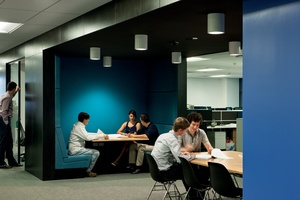
The idea is that staff and clients alike should constantly have a sense of being in an engineering environment.
Chin says that, as part of the translation of engineering into the interior design, “we extracted lovely geometries and applied them to the space”.
Engineering patterns were translated into the geometrical front desk and carpet design whilst angular timber screen walls represent formulas and structural elements from the industry.
Exposed mechanical, electrical and acoustic services add to the visual representation of the field, as well as the use of materials: steel, recycled rubber and plywood, which corroborate the theme.
A palette of natural hues and pops of fresh green, taken from the company’s logo, brighten up the previously dull offices, bringing them into line with the creative nature of the engineering profession.
Much-needed configuration changes involved staff shifting to the perimeter of the building where natural light is available. Desks are now simple and arranged in strict lines, to allow for back-to-back interaction within teams. Circulation and meeting spaces were multiplied and located more centrally.
Engineers like everything to be reasonably structured, says Ilich and laughs that too much going on “would be sensory overload for some of us!”
Chin says ‘engineering thinking’ was applied to the layout of the workplace, rationalising the design to make it more efficient and easier to navigate.
The creation of informal spaces for interaction with clients, as well as removing divisions between ‘front of house’ and ‘back of house,’ now allows transparency and less-formal meetings to take place.
The high number of spaces for collaboration – be they meeting rooms, conversation nooks and booths, or the large café-like social space on the third floor – ensures staff want to stay in the building for lunch (increasing chances for interaction between departments) rather than leave to go to the many popular cafés in the area.

A feeling of affection and ownership towards the new space is evident with one senior engineer dubbing the plywood room dividers – which delineate several meeting spaces as well as the arrival area – “rhinoceros bars”.
The design of the central stairwell was commissioned to young Aurecon engineers: a task that presented both an interesting working challenge as well as a further opportunity for emotional investment in their workplace.
Ilich confers that employees have taken to the new space “like ducks to water” and are using all of the informal meeting nooks and niches exactly in the way for which they were designed.
Upgrading videoconferencing facilities was also important for the company, which is part of a global network of Aurecon offices, employing 7, 500 people worldwide.
The Auckland city skyline depicted on the glass wall in one of the meeting rooms helps connect the offices to the international Aurecon community, while also gently reminding the video-caller of whom they are speaking with.
Ilich says the new space has resulted in far fewer staff complaints and he has noticed employees are generally much happier. Delivery centre manager Bruce Manners, who spends time in both the Auckland and the Wellington Aurecon offices, says wistfully, “I go back to Wellington and I think ooh, we could do with a change…”.

